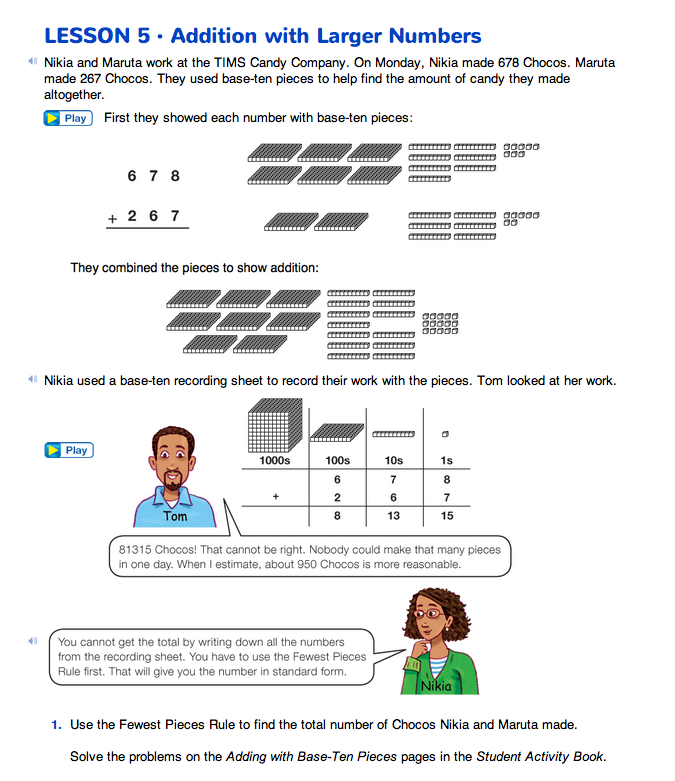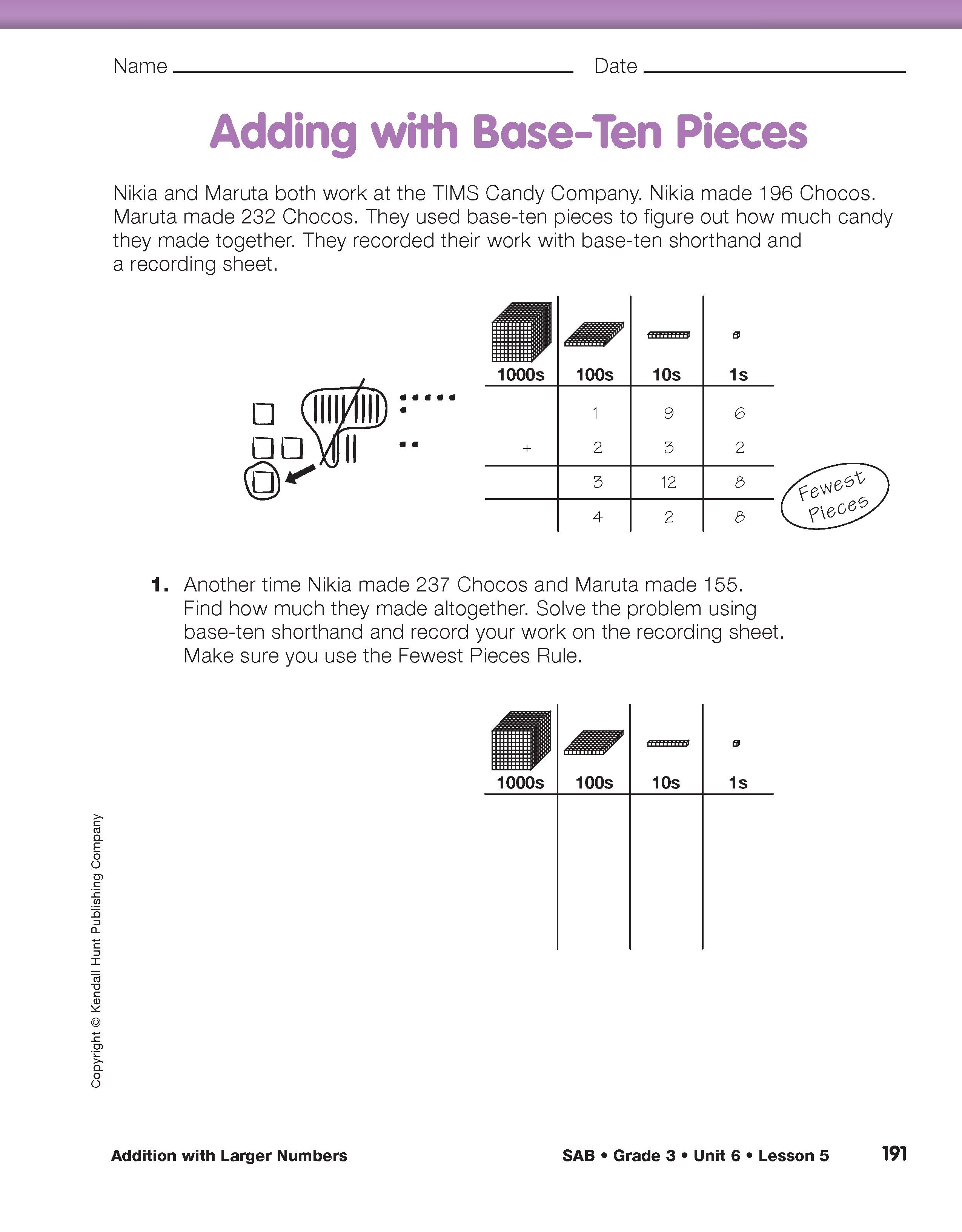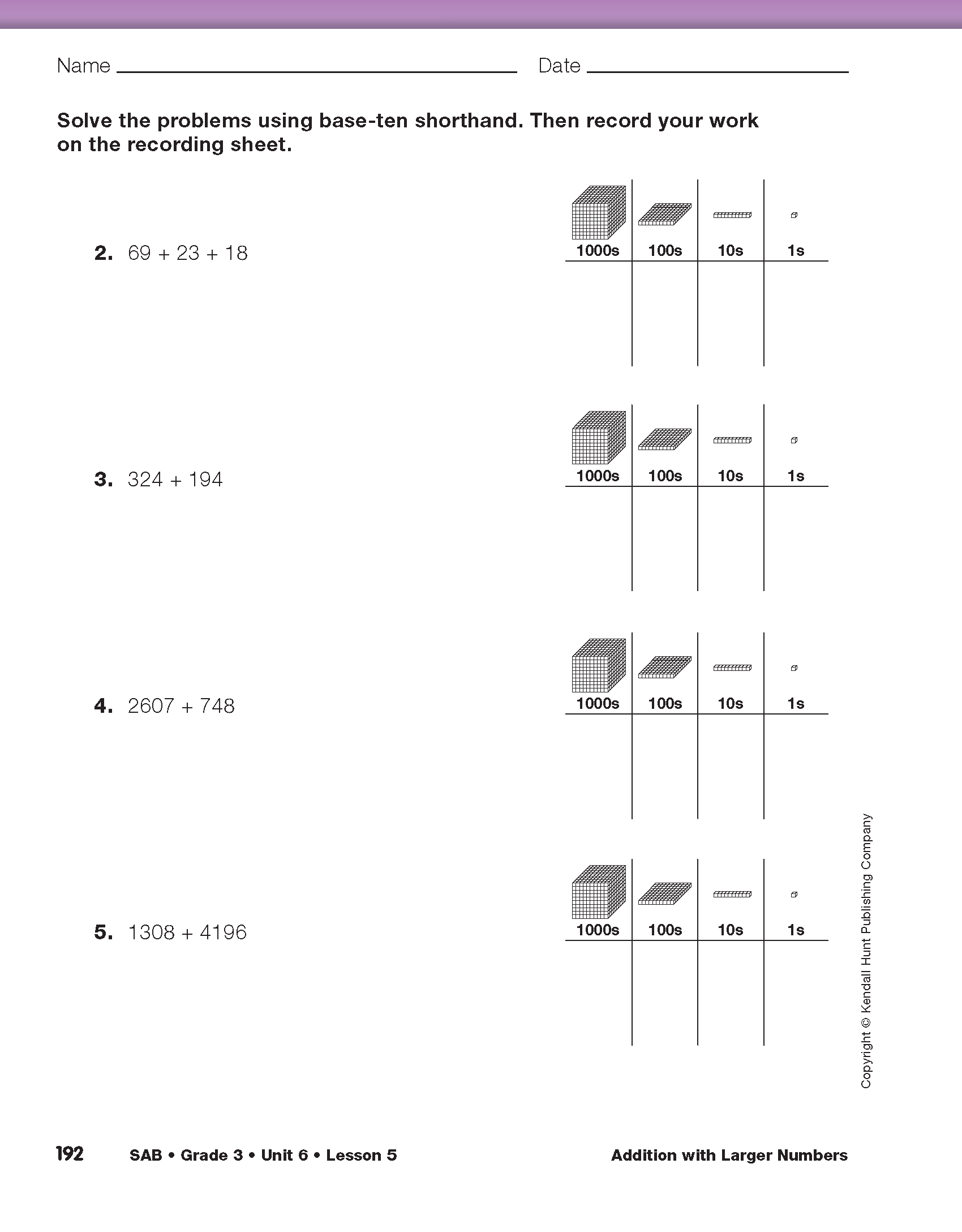Addition with Larger Numbers
Est. Class Sessions: 4Developing the Lesson
Part 2: Using Base-Ten Pieces to Add
Show Trades with Base-Ten Pieces. Distribute sets of base-ten pieces to student pairs.
Display the following problem and ask:
Direct students' attention to the Addition with Larger Numbers pages in the Student Guide. Read the opening vignette together as a class. Nikia and Maruta use base-ten pieces to solve the problem. Model the problem with a display set of base-ten pieces as students work with their own sets. Ask students to make connections between the base-ten pieces and the numbers Nikia recorded on the base-ten recording sheet.
Ask:
Discuss Question 1 as a student shows how to use the Fewest Pieces Rule with the base-ten pieces and finds the answer in standard form: 945. One way of trading is shown in Figure 4. Students may develop other methods that work well for them, including some where they trade from the right. See Figure 5.
Ask:
Practice Recording with Base-Ten Pieces. Direct students' attention to the Adding with Base-Ten Pieces pages in the Student Activity Book to continue practice. Read Nikia and Maruta's problem at the top of the page. Show how to represent and solve 196 + 232 with base-ten shorthand as students follow the text.
Ask:
Assign Questions 1–5. For these problems, students represent addition problems with base-ten shorthand, record their answers on base-ten recording sheets, and then make trades using the Fewest Pieces Rule to find the number in standard form. Have base-ten pieces available for students who choose to use them.
Decide when your students are ready to move on. Students may need to do additional problems together, in groups, or individually. See Figure 6 for examples of problems with one regrouping and Figure 7 for problems with multiple regroupings. Have base-ten pieces available for students who choose to use them. Ask students to explain their trades and to check to see whether their answers are reasonable.




















